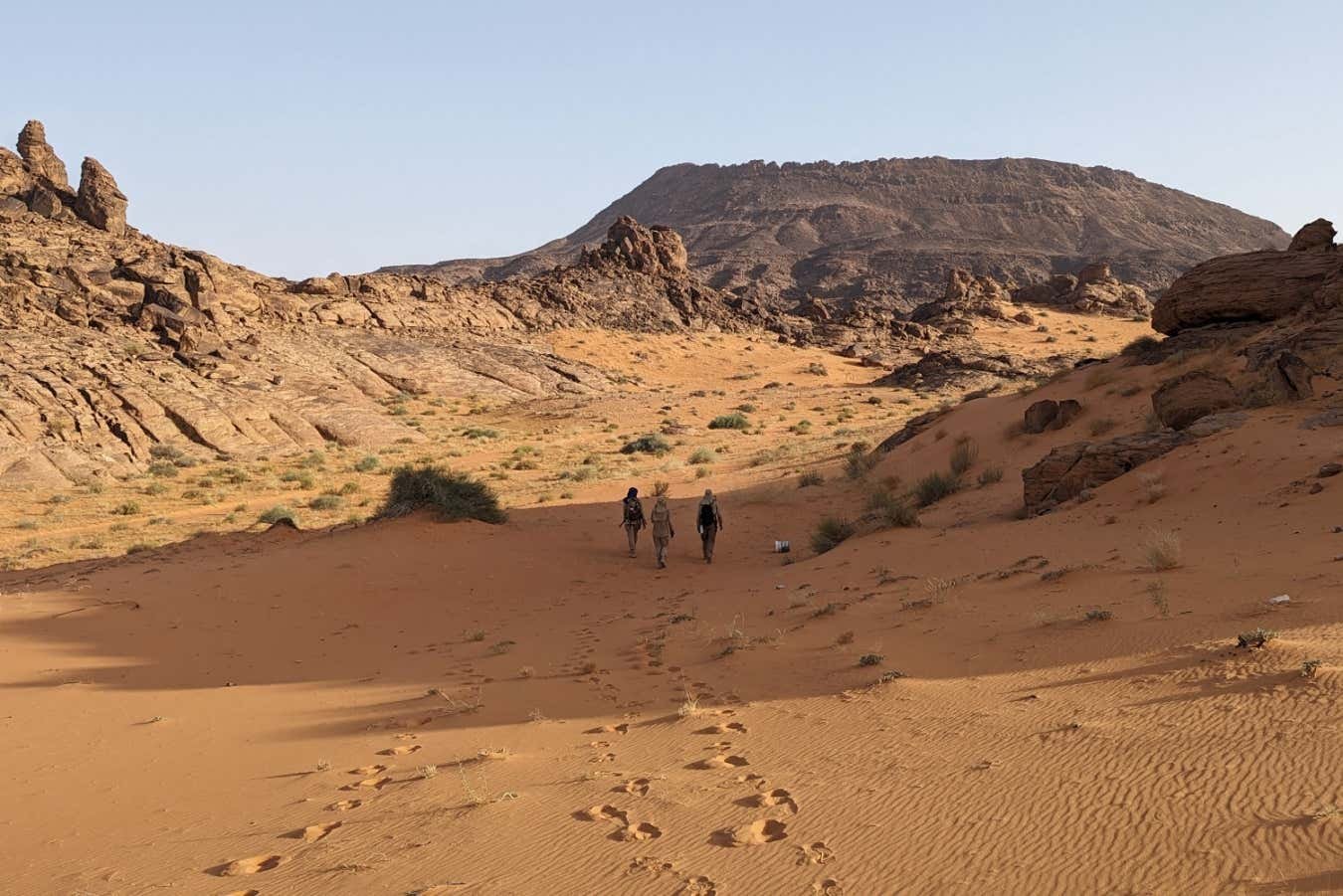
TRUDGING through hot, red sand is hard work, especially in temperatures above 40°C (104°F). After about 40 minutes, I am drenched, dehydrated and drained. I can’t imagine doing this for 40 days, dragging all my gear behind me – including 40 litres of water, enough for five days – on a two-wheeled trolley. But that is exactly what the people I am travelling with have just done.
I am in the Nafud desert, a vast tract of sandy and rocky wilderness in northern Saudi Arabia, to experience levels of heat that I am not built to endure – and to meet 20 people participating in an expedition called Deep Climate, dedicated to understanding how humans respond to extreme conditions. “The idea is to study how human beings can adapt to a new kind of environment,” says Christian Clot, the leader of the expedition and director of the Human Adaptation Institute in France.
As the climate warms, the issue is becoming increasingly pressing. Even under the most optimistic scenarios, the scorching heat seen in southern Europe and across the US over the past couple of months, with temperatures exceeding 40°C, will become the norm in many parts of the world.
That means the question of what happens to our brains and bodies, and the extent to which human physiology can cope with extreme heat, matters for millions of people. “You’re going to see a great big swathe of very densely populated areas go up to unprecedented temperatures that nobody experienced in the historical climate,” says Tim Lenton at the University of Exeter, UK, who recently co-authored a research paper called “…

